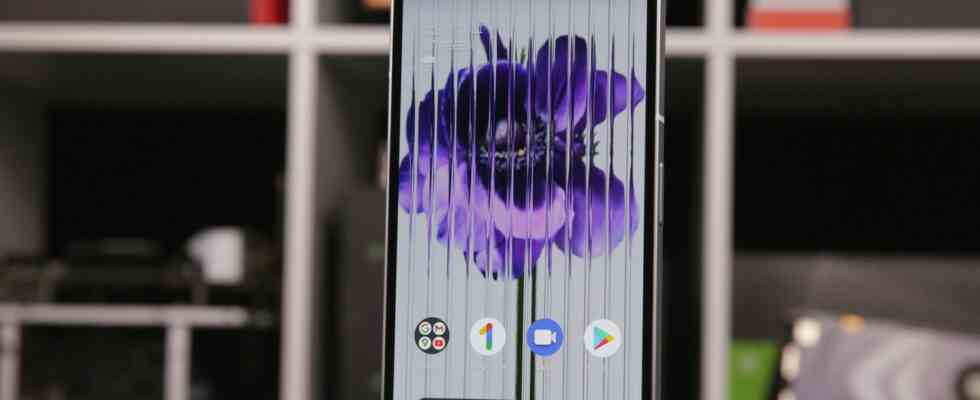Nothing has recently stopped advertising the phone (1) (test) with a maximum display brightness of up to 1,200 cd/m², but only up to 700 cd/m², after ComputerBase had confronted the company with corresponding measured values. In the smartphone test, the higher value could not be achieved in any scenario.
In the documents on the phone (1) made available to the press, such as the so-called “Reviewer’s Guide”, in which the manufacturer summarizes the most important characteristics and features of the smartphone for an upcoming test, in the run-up to the announcement, when the device was still subject to a blocking period, as well as in the period after the official presentation on July 12th, the release of tests on July 15th and the market launch on July 21st there was always talk of an OLED display with up to 1,200 cd/ m² (nits) should be bright. Until recently, this information could also be found on the Nothing website, like several others Entries in the Wayback Machine demonstrate.
The manufacturer advertised up to 1,200 cd/m²
Specifically, the manufacturer advertised a brightness of 500 cd/m² and a maximum brightness of 1,200 cd/m². The lower value refers to the maximum brightness that can be achieved by manual adjustment, the higher value to the brightness in automatic mode if this is regulated via the brightness sensor depending on the ambient light. In addition, the “Average Picture Level” (APL) comes into play in this mode at the peak brightness, which enables higher brightness, the smaller the white component on the screen is. This is a special property of OLED screens, which is also used in televisions, for example.
Only 700 cd/m² could be determined in the test
In the Phone (1) test, however, ComputerBase was never able to achieve the advertised 1,200 cd/m², as also noted in the article. Tests were also carried out with a particularly small APL and with various HDR videos to determine whether there are special conditions in which the display potentially unlocks higher brightnesses – but without success. The determined maximum was always almost 700 cd/m², as the following diagram shows. The few editors who also carried out real measurements and did not just take over the manufacturer’s information, for example hot or GSMArenadetermined values of around 660 cd/m² (100% APL).
Nothing has adjusted information
The editors had already contacted Nothing on the subject on July 13, before the test was published. On July 19th, ComputerBase received the information that the described behavior is still being investigated by the support team. On August 1, Nothing was asked again whether the problem could be understood or under what conditions the advertised value could be achieved. Finally, on August 3, the display said that the support and technical team answered the request with “big priority“ has been reviewed internally. “The peak values are around 700 nits for brightness‘ Nothing finally explained. Nothing will adjust this in the future, it said. However, the editors cannot accuse the company or the responsible PR agency of poor communication, transparency or delaying tactics, because many questions about the device and software were answered promptly.
The adjustment promised by Nothing has now been completed. On the manufacturer’s website, the peak brightness of the phone’s display (1) only goes down towards the bottom of the product page advertised with 700 cd/m². The adjustment does not change anything in the panel’s evaluation by the editors, since a conclusion was already drawn in the test based on the values determined by the editors. In addition to the brightness, which has been criticized, the main advantages of the OLED panel supplied by Visionox were the symmetrical layout and the fast refresh rate of 120 Hz.

